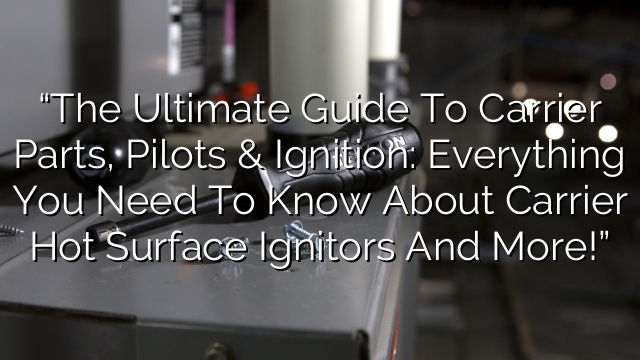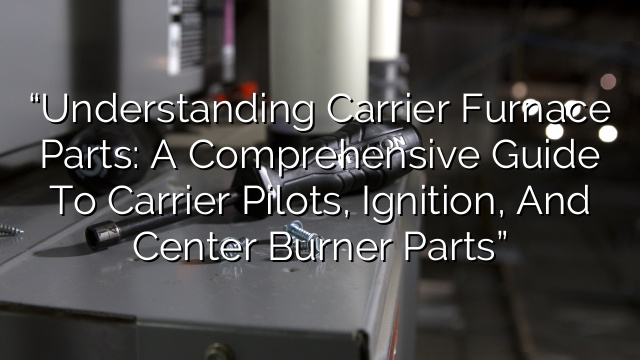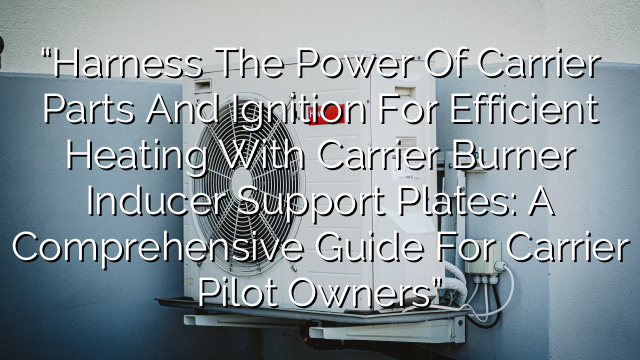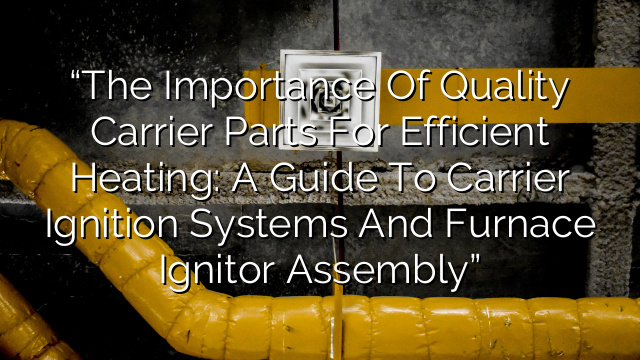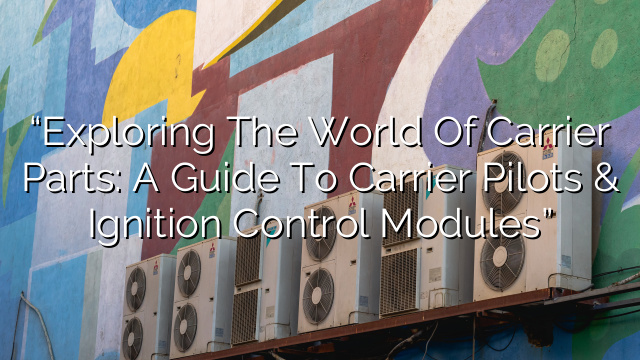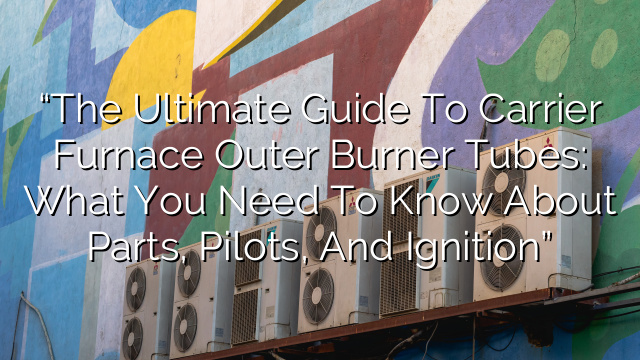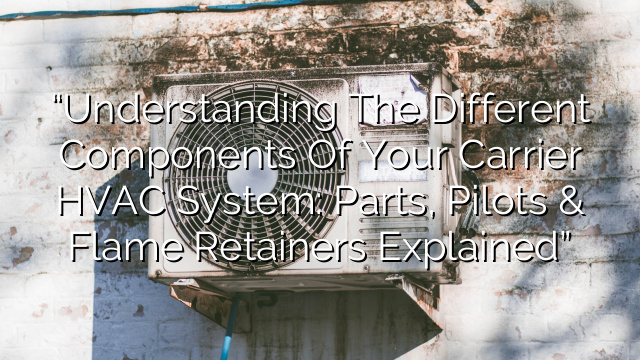Introduction
Carrier is a renowned brand in the HVAC industry, known for its high-quality products and innovative heating and cooling solutions. When it comes to Carrier parts, pilots, and ignition systems, nobody does it better than Carrier. In this ultimate guide, we will take you through everything you need to know about Carrier hot surface ignitors and other essential components of Carrier systems.
1. Understanding Carrier Parts
Carrier systems are built with precision and designed to deliver exceptional performance. However, like any other mechanical equipment, they require regular maintenance and occasional repairs. Carrier parts play a crucial role in keeping your system running smoothly. From filters and capacitors to ignitors and heat exchangers, there are numerous components that may require replacement during the lifespan of your Carrier system.
2. The Importance of Carrier Pilots & Ignition
Pilots and ignition systems are critical components of a Carrier system. Carrier pilots ensure that the burners ignite properly, while ignition systems provide the necessary spark or heat to initiate combustion. These components are essential for the efficient operation of your furnace or boiler. Inefficient or faulty pilots and ignition systems can result in poor heating performance, increased energy consumption, and even potential safety hazards.
3. Carrier Hot Surface Ignitors
Carrier hot surface ignitors are one of the most common types of ignition systems used in Carrier furnaces and boilers. As the name suggests, these ignitors rely on a heated surface to ignite the burners. They are made of robust silicon carbide, which can withstand extreme temperatures without degrading. Carrier hot surface ignitors offer a reliable and long-lasting ignition source, ensuring that your heating system operates efficiently, even in harsh conditions.
4. How to Replace a Carrier Hot Surface Ignitor
If you suspect that your Carrier hot surface ignitor is faulty, it is essential to replace it promptly to avoid disruptions to your heating system. Here is a step-by-step guide to help you replace a Carrier hot surface ignitor:
- Turn off the power to your Carrier system.
- Locate the ignitor, which is typically situated near the burners.
- Disconnect the electrical connectors from the old ignitor.
- Remove any screws or mounting brackets holding the ignitor in place.
- Install the new ignitor, ensuring it is properly aligned.
- Reconnect the electrical connectors to the new ignitor.
- Turn on the power and test the system to ensure the new ignitor is functioning correctly.
5. Where to Buy Carrier Parts & Ignition Systems
When it comes to buying Carrier parts and ignition systems, it is essential to choose a reputable supplier. Authorized Carrier dealers and distributors are your best bet as they can provide genuine, high-quality parts specifically designed for your Carrier system. Additionally, these suppliers often have knowledgeable staff who can assist you in finding the right parts and provide guidance on installation.
FAQs
1. How often should I replace my Carrier hot surface ignitor?
Carrier hot surface ignitors typically have a lifespan of 3-5 years. However, their longevity can be affected by various factors, such as the frequency of use and the quality of the power supply. It is recommended to inspect your ignitor annually and replace it if there are signs of wear or degradation.
2. Can I replace my Carrier hot surface ignitor myself, or do I need to hire a professional?
If you have experience working with HVAC systems and feel confident in your abilities, you can replace your Carrier hot surface ignitor yourself. However, if you are unsure or uncomfortable with the process, it is always best to hire a professional HVAC technician. They have the necessary knowledge and tools to ensure a safe and proper installation.
3. Are there any troubleshooting steps I can take before replacing my Carrier hot surface ignitor?
Yes, there are a few troubleshooting steps you can take before deciding to replace your Carrier hot surface ignitor. Check for any loose connections or damaged wiring around the ignitor. Additionally, you can use a multimeter to test the electrical continuity of the ignitor. If it reads an open circuit, it is a clear indication that the ignitor is faulty and needs replacement.
4. Can I use a non-Carrier hot surface ignitor in my Carrier system?
While it is possible to use a non-Carrier hot surface ignitor in your Carrier system, it is not recommended. Carrier systems are designed to work best with genuine Carrier parts, ensuring optimal performance and reliability. Non-Carrier ignitors may not have the same quality standards and specifications, potentially leading to compatibility issues and reduced performance.
5. How much does a Carrier hot surface ignitor cost?
The cost of a Carrier hot surface ignitor can vary depending on the specific model and the supplier you choose. On average, you can expect to pay between $30 to $100 for a genuine Carrier hot surface ignitor. It is worth investing in a high-quality ignitor to ensure the longevity and performance of your heating system.
Conclusion
Carrier parts, pilots, and ignition systems are crucial for the efficient operation of your Carrier heating system. Regular maintenance and prompt replacement of faulty components, such as hot surface ignitors, are essential for ensuring optimal performance and longevity. By understanding the role of these components and following the recommended guidelines for replacement, you can keep your Carrier system running smoothly and enjoy reliable heating for years to come.

